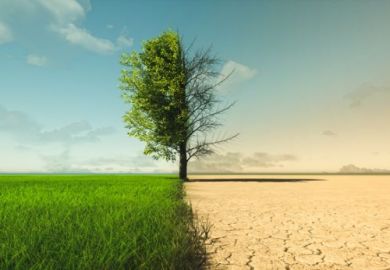In 1994, Oxford University's Botanic Garden won its first gold medal at the Chelsea Flower Show. The exhibit looked at the use of colour in gardens and the science behind colour in plants. One thing we learnt from that year's exhibit was that the gardeners of England are very interested in colour.
This book is written for the "informed non-scientist, probably with an interest in gardening or natural history". David Lee hits his target audience very successfully with an enthusiasm for his subject that will infect the reader. He obviously cares about colour because he tells us which photographic film he used for his significant personal contribution to the 238 colour photographs in this richly illustrated book - a small point perhaps but indicative of the detail and care that has gone into its preparation.
Gardeners are fond of asking botanists "Why do ... ?" questions, presumably because they are so committed to Darwin's hypothesis that they believe that every trait must have a function. One of the most common colour-related questions from gardeners is: "Why do some leaves change colour to yellow and red in the autumn?" Like most botanists of a certain age, Lee was told that it was due to the breakdown of chlorophyll revealing the yellow carotenoid and red anthocyanin pigments lurking behind them. Even at the time, it seemed strange that dark reds could be hidden by light greens. Recent research, which Lee describes clearly, has revealed that the anthocyanins are synthesised in the autumn and fulfil several protective roles. The biochemical de-synthesis of chlorophyll molecules inter alia and the scavenging of nitrogen for the following spring creates a potentially toxic environment. The anthocyanins absorb the blue-green light, thus protecting the fragile chloroplasts from the higher energy photons, with the consequence that fewer destructive free radicals are released. Furthermore, the anthocyanins neutralise the products of photo-oxidation such as hydrogen peroxide. Leaves that turn red are thus better able to retrieve more nitrogen before leaf fall in preparation for the following spring.
However, as with most explanations of a biological process, one is left asking: "Why don't all leaves turn red?" Are the species that turn yellow or brown able to recover their nitrogen and survive the chemical carnage of autumn? The answer appears to be that there is more than one way to get through autumn and that the various strategies co-exist because not one of them is perfect.
This book is about far more than autumn. Lee starts the book by taking his informed non-scientist through the physics of light, the biochemistry of pigments and the biology of cell structure. Having brought the reader up to first-year undergraduate level he gets to the meat of the subject, looking at the role of colour in the functioning of leaves, flowers, fruit, seeds and even stems. There is a particularly elegant explanation of how some forest-floor species have blue leaves - an explanation that has nothing to do with pigments but all to do with leaf surface. This raises the still unanswered question of why a plant would wish to reduce its photosynthetic potential, and thus its growth rate, by reflecting perfectly decent light.
This book achieves its goal of explaining the science and function of colour in plants. However, as with so much of biology, one is left feeling that our knowledge is patchy at best.
Timothy Walker is director of the Oxford University Botanic Garden.
Nature's Palette: The Science of Plant Color
Author - David Lee
Publisher - University of Chicago Press
Pages - 384
Price - £19.00
ISBN - 9780226470528
Register to continue
Why register?
- Registration is free and only takes a moment
- Once registered, you can read 3 articles a month
- Sign up for our newsletter
Subscribe
Or subscribe for unlimited access to:
- Unlimited access to news, views, insights & reviews
- Digital editions
- Digital access to THE’s university and college rankings analysis
Already registered or a current subscriber? Login



